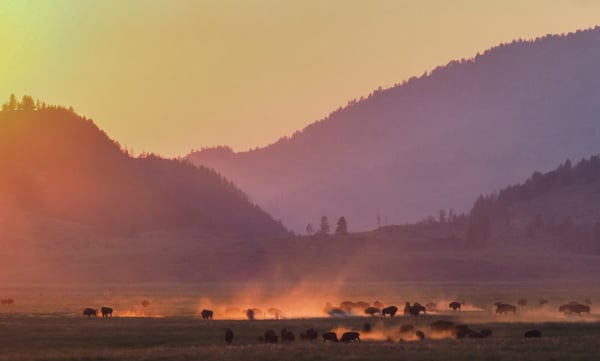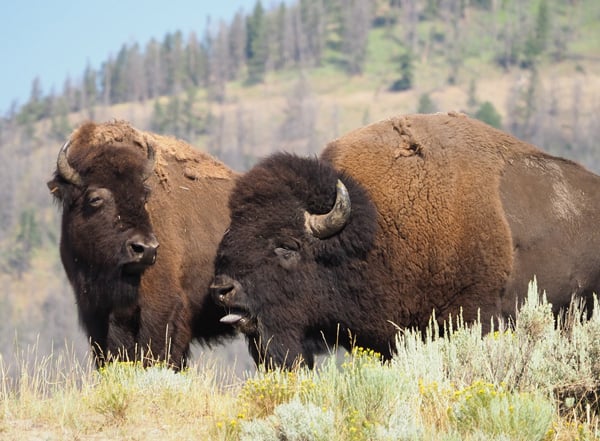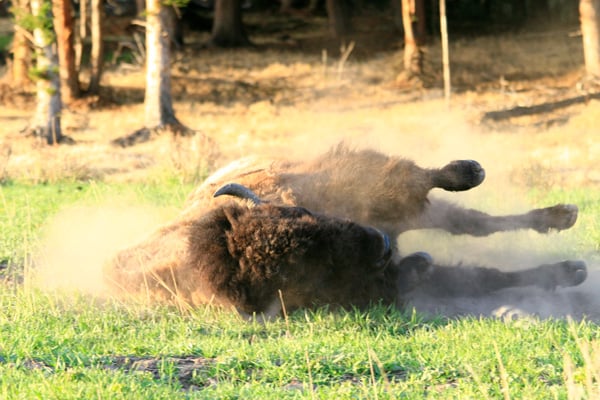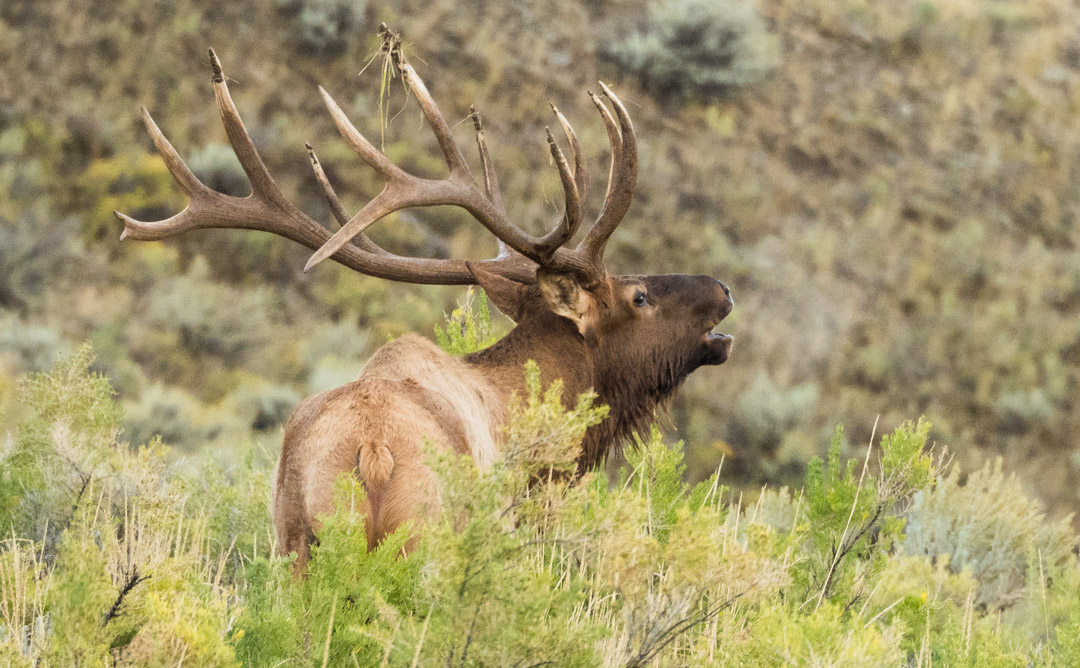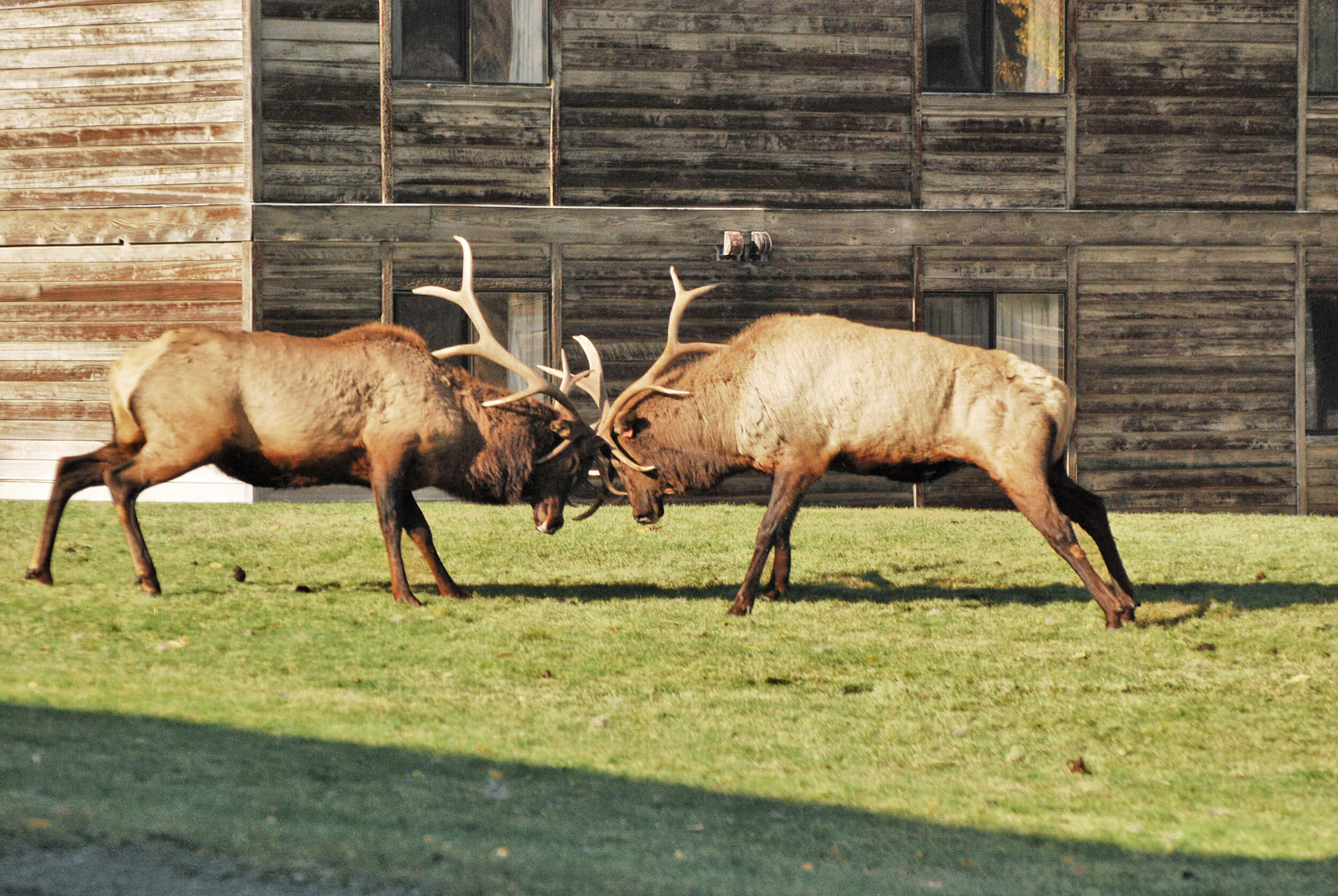Sound the Bugle: Making the Most of the Elk and Bison Rut
Bison Rut & Elk Rut in Yellowstone
Two of Yellowstone’s most exciting wildlife events of the year happen in August and September: the bison and elk mating seasons – otherwise known as the rut. Here’s what you need to know to safely enjoy these annual wildlife spectacles.
Bison Rut
In early to mid-August, when the air smells of sage and crackles with dryness, bison gather by the thousands in the Lamar and Hayden Valleys. Magnificent, two thousand pound bulls strut across the landscape, bellowing their virility in deep-throated guttural roars as they compete with other bulls for the right to mate. Plumes of dust rise high into the air, as the mighty bulls rumble, wallow, and strut. Cows and bulls pair off, as males tend a female who is ready to mate. Calves follow forlornly behind their mothers, ready to scurry out of the way when a bull approaches.
The best places to witness this ancient ritual are the Lamar and Hayden Valleys. You will see bison almost any time of day, but they are more active in the mornings and evenings – which is also the best time for photography. In addition to observing, listen to the sounds they make, watch the way they move in an undulating dance across the golden valleys, and smell the acrid scent of sagebrush and bison musk. The experience is unforgettable.
Elk Rut
A little over a month later, in mid-September, the elk mating season begins. Otherworldly bugles—the vocalizing of bull elk—cut through the frosty pre-dawn and the herds coalesce into larger groups. Unlike bison, who guard one female at a time, bull elk compete for access to a group of a dozen or so females, known as a harem. Watching and listening to the eerie bugle of the bulls as they jockey for position and guard their harems is one of the true highlights of fall in Yellowstone.
Have you ever heard the sound an elk makes during the fall rut? It’s a thrilling, yet haunting experience that draws thousands of visitors to Yellowstone each fall. It’s an experience unlike any other in the park, with bull elk bugling ranging from low throaty sounds or a series of deep grunts to high pitch whistles. Listen to an elk bugle.
Mammoth Hot Springs is grand central for the elk rut. Watching in the village itself is easiest, but if you want to get away from the crowds you might try exploring Swan Lake Flats and the Madison Valley.
While everyone hopes to see a fight between bull elk or bison, it doesn’t happen as often as you might think. Once the peak of mating season arrives the bulls have already established a pecking order. Fights are rare, because no one really wants to get hurt; bison and elk instead rely on vocal displays, body gestures, and olfactory cues to figure out who’s bigger and stronger. If that doesn’t settle the debate then they may go head to head – in a giant shoving match that can sometimes prove fatal.
A common misconception is that the bulls—both elk and bison—are in charge. That’s not entirely true; watch closely, and you’ll see that it’s the females who actually make the choice, tolerating a bull they find attractive, and running away from those they don’t. Their behavior is all about calf survival. Mating in August and September enables the calves to be born in the spring when they have the best chance to survive, and choosing the most vigorous males helps ensure the calves vitality.
While the rut is exciting to witness, bison and elk are highly aggressive and unpredictable during this time. It’s critical to maintain the park’s required distance of 25 yards, and even a bit extra. The last thing you want to do is tangle with an amped up bull elk or bison – both have been known to attack visitors and cars. Keep your distance, stay close to (or in) your vehicle, and enjoy them safely. Safety should always be a visitors’ number one priority when visiting Yellowstone during the elk rut. And when all of the proper safety precautions are taken, it can be one of the park’s most enthralling and memorable wildlife viewing experiences.
Be aware that during this time, male elk can be highly aggressive and will charge cars and people. DO NOT approach on foot or in your vehicle.
For A World of Unforgettable Experiences® available from Xanterra Travel Collection® and our sister companies, visit xanterra.com.
Want to experience Yellowstone in-depth? See what makes Yellowstone National Park a great place to work for a season or longer!
Read More Fall Stories
- Read More Fall Stories
